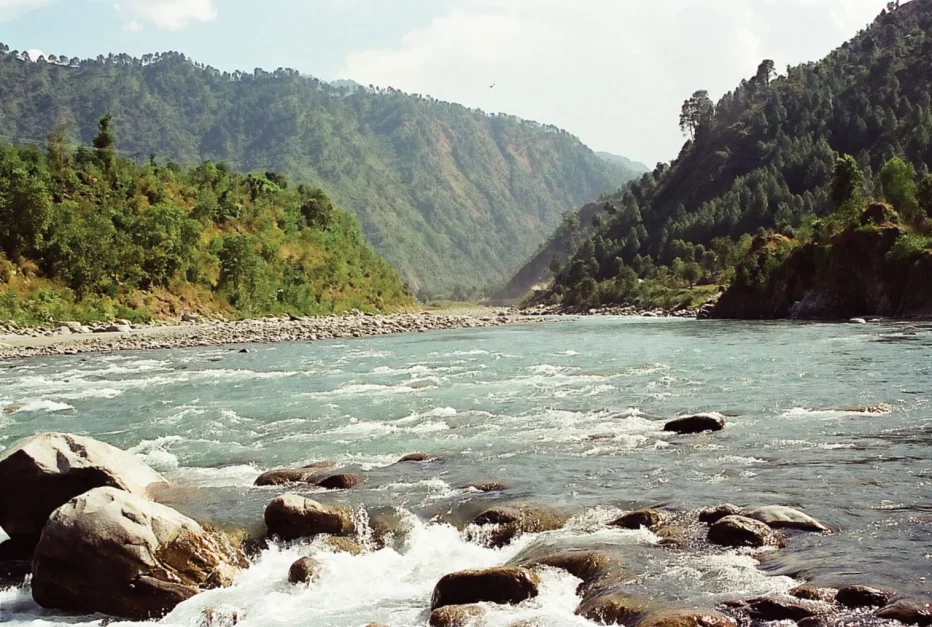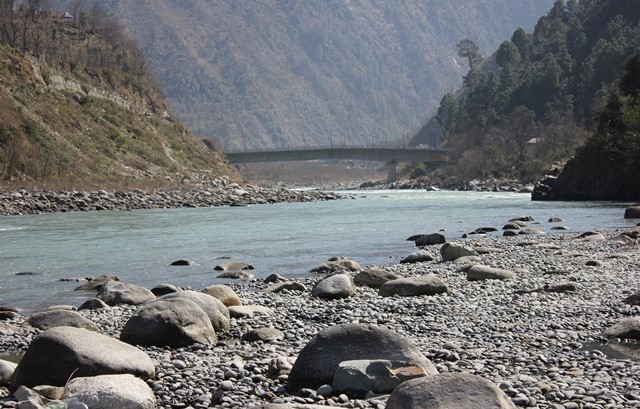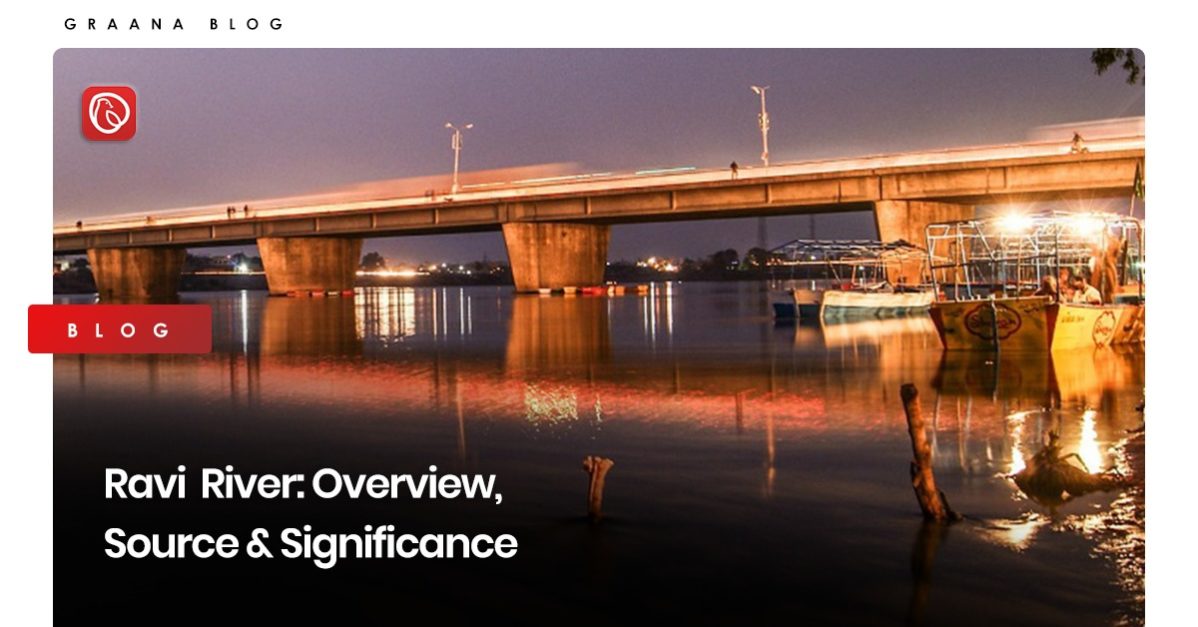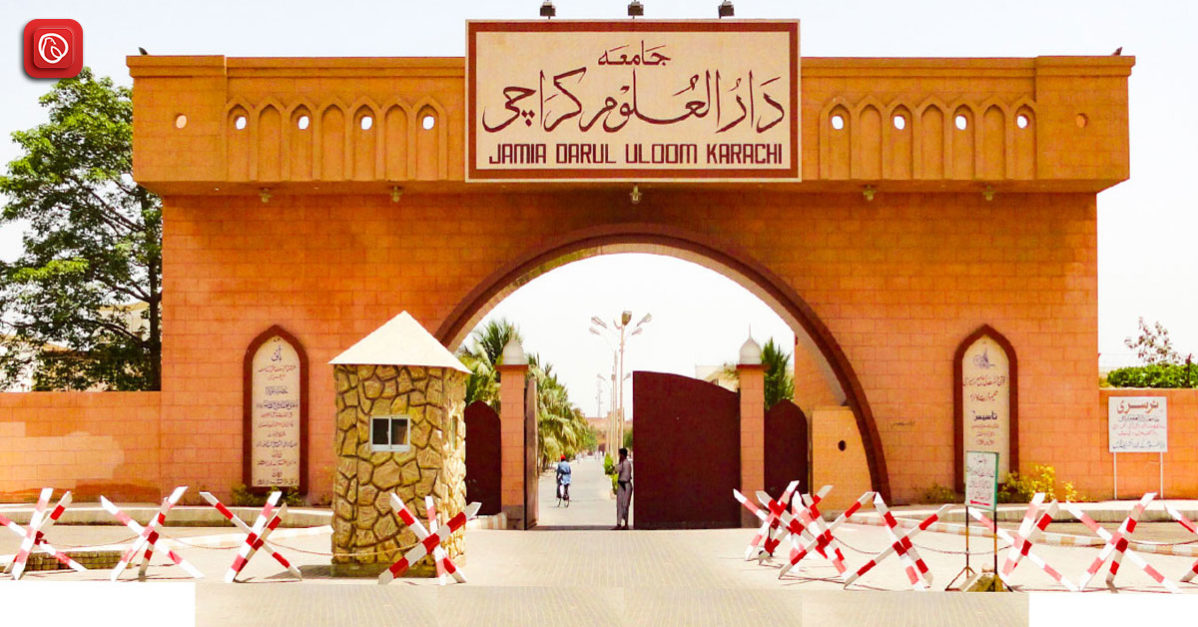Rivers have always played a vital role in sustaining human civilisation, with the Ravi River (دریائے راوی) being no exception. This river originates from the Himalayas and flows through Himachal Pradesh and Punjab before entering Pakistan, where it merges with the Chenab River. The Ravi River has been a significant water source for irrigation and drinking purposes in the regions it flows through.
Additionally, the river has been a critical factor in shaping the culture and history of the areas it passes through, with several historical sites on its banks. Graana.com has discussed an overview, source, and significance of the Ravi River.
Ravi River Overview ( Darya Ravi)
The Ravi River is one of the five tributaries of the Indus River, located in northwestern India and northeastern Pakistan. It originates in the Himalayas in India and flows west-northwest, passing Chamba and then turning southwest at the border of Jammu and Kashmir union territory.
It continues westward along the Pakistani border for over 50 miles (80 km), entering Pakistan’s Punjab province. The river then flows past Lahore before turning west near Kamalia, emptying into the Chenab River south of Ahmadpur Sial after a total length of approximately 450 miles (725 km).
The Ravi River’s hydrology is influenced by the spring snowmelt and the South Asian monsoon, which brings heavy rains from June to September. During the monsoon season, the river can have flood discharges surpassing 600,000 cubic feet (17,000 cubic metres) per second. However, the flow and suspended sediment load are significantly reduced in winter.
The Ravi River, one of the most famous rivers in Pakistan, plays a significant role in irrigating a vast stretch of land along its path. The Upper Bari Doab Canal, completed in 1878-79, irrigates a vast area east of the Ravi in India, and its distributary canals extend into Pakistan. However, there were frequent water disputes between India and Pakistan before the signing of the Indus Waters Treaty in 1960.
Under the treaty, the waters of the Ravi were assigned to India in exchange for Pakistan’s exclusive rights to the waters of the Indus and its western tributaries. The Lower Bari Doab Canal, completed in 1917, is entirely located in Pakistan.
Source of River Ravi

The Ravi River is a perennial river that originates in the Multhan tehsil of Kangra district in Himachal Pradesh, India. It is the smallest of the five Punjab rivers and starts from glacier fields at an elevation of 14,000 feet on the southern side of the Mid-Himalayas.
The river flows through Bara Bhangal, Bara Bansu, and Chamba districts and has a north-westerly course. In its initial reaches, the river flows through rapids with boulders in its bed and a river bed slope of 183 feet per mile. It is mainly fed by snowmelt, as the area falls under a rain shadow.
The Budhil River and the Nai or Dhona are two significant tributaries of a river, which confluence 64 kilometres downstream from where the river originates. The source of the Budhil River is the Manimahesh Kailash Peak and the Manimahesh Lake, both important Hindu pilgrimage sites located in the Lahul range of hills at an elevation of 4,080 metres.
The Budhil River is 72 kilometres long, has a bed slope of 314 feet per mile, and flows through the ancient capital of Bharmwar, presently known as Bharmour in the Himachal Pradesh region.
Between 1858-1860, the Raja of Bharmour identified the Budhil valley as a valuable source of Deodar trees to supply the British Raj.
However, a portion of the forest around the temple was regarded as sacred and was declared a reserved area. The second tributary, the Nai, has a length of 48 kilometres with a bed slope of 366 feet per mile, and it flows from its source at Trilokinath to its confluence with the Ravi River, rising at Kali Debi pass. The forest in this valley was also utilised for its timber resources during the British era.
Main River Ravi

The Ravi River passes through the base of Dalhousie hill and flows past Chamba town at an elevation of 856 metres. It then flows towards the southwest, near Dalhousie, and creates a gorge in the Dhauladhar Range before entering the Punjab plain near Madhopur and Pathankot.
The river continues along the Indo-Pak border for around 80 kilometres before entering Pakistan and eventually joining the Chenab River. The total length of the Ravi River is approximately 725 kilometres.
The Ujh River is a significant tributary of the Ravi River that originates from the Kailash mountains, close to the Bhaderwah Mountains in the Jammu district, at an elevation of 4,300 metres. It flows for 100 kilometres before joining the Ravi River at Nainkot in Pakistan.
Ravi River, when it reaches Lahore in Pakistan, earns the nickname “The river of Lahore” because the city is located on its eastern bank, situated 26 kilometers downstream from Amritsar in India.
The river then turns at Kamalia and merges with the Chenab River south of Ahmadpur Sial. On the western bank of the river is the town of Shahdara Bagh, which is home to the Tomb of Jahangir and the Tomb of Noor Jahan.
Significance of River Ravi
The Ravi River holds immense significance for the people residing along its banks. The river is a crucial water source for irrigation, which nourishes the crops grown in the region. The fertile land along the river’s banks is perfect for growing crops like wheat, rice, and sugarcane. Farmers rely on the river’s water to irrigate their fields, which makes the river a crucial part of the local agriculture industry.
Besides agriculture, the Ravi River also plays an essential role in the daily lives of the people living in the region. People use the river’s water for various purposes like washing clothes, bathing, and cooking.
The river also provides a habitat for various species of fish, which is a significant source of protein for the local population. The Ravi River is not just a water source; it is a part of the local culture and a symbol of the people’s way of life.
For more information regarding different rivers of Pakistan, visit Graana Blog.




